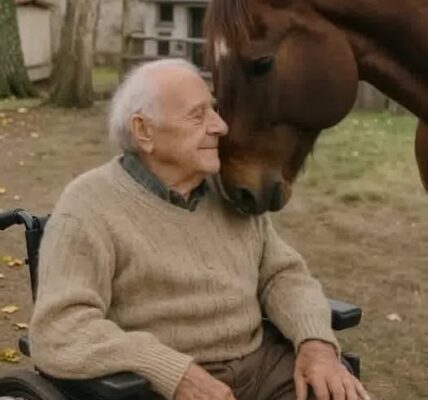The tragedy began on an ordinary day inside a home that should have been the safest place in the world for a child. A 12-year-old, full of the restless energy and curiosity that define that age, crossed a room without the faintest idea that a hidden danger waited beneath their feet. One wrong step. One faulty connection. One burst of electricity powerful enough to stop a young heart in seconds. By the time the family realized what had happened, the damage was irreversible. The child collapsed, unresponsive, and despite frantic efforts to revive them, they were gone before help could arrive.
News of the accident spread quickly, leaving neighbors shaken and the community stunned. A death like this—so sudden, so avoidable—struck a nerve. Families everywhere began quietly checking outlets and wires in their own homes, suddenly aware of threats they’d never considered. Parents clutched their kids a little tighter. Friends whispered to each other in disbelief. And the grieving family, shattered by a loss too heavy to bear, could only replay the moment again and again, wishing desperately it had gone differently.
When authorities arrived, they sealed off the area and began examining the source of the electrical shock. Early findings pointed to a faulty wire—a connection that should have been safe, but had been deteriorating unnoticed. Maybe it was improperly installed years earlier. Maybe it had been damaged by moisture or pests. Maybe someone had attempted a quick DIY fix long before the current occupants lived there. Whatever the cause, the result was the same: a lethal hazard hidden in plain sight.
Investigators began interviewing neighbors and electricians, piecing together the home’s history. Many older houses contain aging wiring that no one bothers to inspect unless something goes wrong. In some areas, safety regulations are barely enforced. In others, families simply can’t afford routine electrical inspections, and issues remain buried behind walls. Problems like frayed wiring, exposed copper, overloaded outlets, and malfunctioning appliances are more common than people like to admit. Most of the time, they stay unnoticed. But when they don’t, the consequences can be catastrophic.
Safety experts who heard about the case were blunt. Electrical systems fail quietly. They don’t warn you. They can look fine on the surface while hiding serious flaws beneath. A child walking barefoot. Someone plugging in a charger. A spilled drink near a socket. Any of these can be enough to expose a deadly weakness. The tragedy became a grim reminder that the home—where we assume we’re safest—is full of risks we often ignore until it’s too late.
As word of the child’s death spread through the community, people began dropping off meals, flowers, and handwritten notes at the family’s home. Teachers from the child’s school organized a vigil, placing candles on the sidewalk and encouraging classmates to share memories. Some described the child’s kindness; others remembered their laughter, their talent, the little things that made them special. The outpouring of grief was overwhelming. It was clear that the loss didn’t just break one family—it fractured an entire circle of people who had watched this child grow.
Social media lit up with stunned reactions. Messages poured in from distant relatives, from strangers who’d read about the accident, from parents imagining their own child in the same situation. People expressed sorrow, anger, disbelief. Many questioned how something like this could happen in a lived-in home without anyone realizing the danger. Others described their own brushes with electrical hazards—the spark behind an outlet, a buzzing sound from a switch, a faint burning smell they once ignored.
Conversations quickly shifted toward prevention. Electricians volunteered to offer free home safety checks for low-income families. Local officials started discussing whether the area needed stricter inspection laws or mandatory checks for older houses. Community leaders spoke publicly about the importance of understanding basic electrical safety—avoiding overloaded power strips, replacing damaged cords, recognizing warning signs, and never attempting repairs without proper knowledge. The tragedy sparked action in a way few events could.
Still, the pain inside the child’s home remained unimaginable. Parents grieving the kind of loss no one recovers from. Siblings left confused and heartbroken. Thoughts of the future—birthdays, milestones, the life that child should have had—now felt like open wounds. The silence in the house was suffocating. Every familiar object became a reminder of what had been taken. A half-finished homework assignment. Clothes folded neatly in drawers. Toys abandoned mid-play, still waiting for hands that would never return.
Yet even through unimaginable sorrow, the community stayed close. Friends delivered groceries. Neighbors handled chores without being asked—mowing the lawn, taking out trash, watching younger siblings so the parents could breathe for a moment. Strangers donated to help cover funeral costs. People who had never met the child mourned as if they had. Grief has a way of knitting people together, even as it breaks them open.
As investigators continued their work, they emphasized that tragedies like this are preventable. Each year, countless households experience electrical fires, shocks, and close calls because of ignored maintenance or hidden defects. Too many families assume everything is fine simply because nothing has gone wrong yet. This incident forced people to confront an uncomfortable truth: safety is not guaranteed. It requires vigilance.
Weeks later, when the initial shock faded, discussions continued. Some families scheduled inspections. Others bought outlet covers, surge protectors, new smoke detectors. Schools invited experts to speak to parents about hidden dangers inside older homes. The child who died became the reason many others became safer. It didn’t ease the grief, but it gave the loss a meaning—an impact beyond heartbreak.
For the parents, nothing could fill the void. They found themselves navigating a world that suddenly felt unrecognizable, learning to function while carrying a grief that would never fully fade. Still, they held tight to the love surrounding them, to the memories of their child, and to the hope that awareness raised in the wake of this tragedy might save another family from the nightmare they endured.
The story stands as a stark reminder that life is fragile, that danger can exist in the most familiar places, and that a single overlooked flaw can have devastating consequences. The hope—if there can be hope in something so painful—is that this loss becomes a turning point. That more people pay attention. That more homes are checked. That more children stay safe.
May the young soul lost in this tragedy rest in peace. May the family eventually find some measure of healing. And may this heartbreaking event serve as a powerful call to action—a push toward greater awareness, responsibility, and protection, so that no other child pays the same price inside the very walls meant to shelter them.




